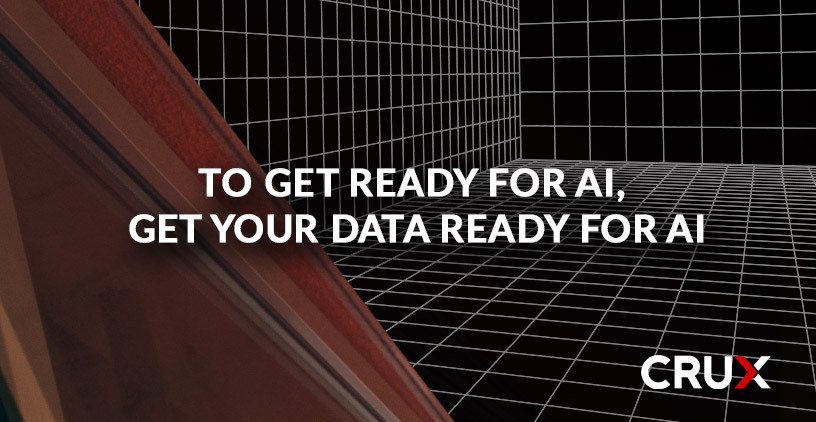What Cloud Marketplaces Do and Don’t Do
Not long ago, we observed here in our blog that the critical insights that drive business value come from data that is both (1) fast and (2) reliable.
5 min read
![]() Scout Scholes
Dec 22, 2022
Scout Scholes
Dec 22, 2022

The overwhelming demand for more data to maintain a competitive advantage is driving the need for access to clean, usable data from anywhere.
Earlier this year, we attended Google Cloud Next 2022 and shared reactions to their predictions for 2023 and beyond. Now, as the year comes to a close, we’re revisiting those predictions and adding other thoughts about the coming year in the external data industry.
This isn’t to say that DataOps teams won’t grow, as they must grow to scale with your business growth. However, end-to-end integration solutions like Crux will augment the workload of your data engineers, allowing those teams to shift large portions of their time from tedious maintenance work to value-add tasks that lead to new insights. Additionally, in today’s job market, talented employees are harder to come by, and expenses increase with headcount because of costs associated with recruiting, onboarding, and retaining that talent. Augmenting your current team and scaling over time is a more stable and effective solution that will gain popularity in 2023.
This has started to happen voluntarily, and more committees are formed to target ESG data standardization, and the logical outcome is a resolution yielding some standards. Whether they’re around formatting data, reporting it, or something else entirely has yet to be determined. Still, it’s clear that this is a huge headache for data consumers, and solving it would be a significant step toward environmental change. Easier access leads to wider adoption, which is critical for ESG data since its adoption drives positive change.
No- and low-code platforms aren’t new technology solutions but are unique for external data consumption. Currently, most data requires complex technical skills to access and even more, skills to parse through and glean insights. Low-code solutions for external data consumption promote accessibility, and much is waiting to be discovered in the folds. Solutions that simplify complex processes are the ultimate goal regardless of the process. Using Canva for graphic design is a great example of this; easy access benefits any industry.
Data mesh is often interchangeably used with data fabric, but they differ. Data fabric addresses the complexity of modern data architectures and provides a much-needed layer of abstraction to make it easier for DevOps teams to manage data workloads. Data mesh is an evolution of the same concept but is a new approach focusing on data ownership and governance.
Paola Saibene, a principal consultant at IT advisory firm Resultant, summarizes it nicely in a recent CIO article:
“Mesh enables an organization to draw the information and insights it needs from the environment in its current state without having to radically change it or massively disrupt it. This way, CIOs can take advantage of [tools] they already have, but add a layer on top that allows them to make use of all those assets in a modern and fast way.”
We already see this in 2022, from Google Cloud Marketplace to Snowflake Sharing to AWS Clean Rooms. Cloud providers are developing and selling their data marketplaces and products as demand grows. These solutions are great for accessibility and sharing and are critical for making external data more usable. But it’s essential to know the difference between these offerings to ensure you aren’t leaving yourself with gaps in your external data pipeline.
Cloud management is poised to become a key driver of business agility, velocity, and resilience. It becomes integral to an enterprise's business strategy and core competencies. Data cloud management is such a large concept that it is also worth its predictions. Still, the overall takeaway is that your cloud provider can and will be a crucial piece of your business infrastructure, not just for data.
This prediction dovetails nicely with the one above. Cloud adoption is not avoidable any longer for those still holding out. We predict that an increasing number of legacy applications will migrate to cloud-native architectures and drive an explosion of opportunities to monetize core business data by packaging and exchanging external data products between market participants. Data producers' and consumers' core challenges are standard exchange formats and patterns, data model inconsistency, and data observability.
We already see this with companies targeting data observability, transformations, entity matching resolution, and other specific challenges. The critical paradigm is providing a world-class solution to a particular job and successfully integrating it into the overall cloud ecosystem.
In case it wasn’t crystal clear in our other predictions, we’re reiterating that not having a cloud service will no longer be an option. Legacy on-prem solutions will be upgraded to maintain compatibility with other necessary solutions integrated and upgraded within the current business architecture. If you’re still on the fence about if you need a cloud solution, think back to how people first felt about emails, yet how critical they are to today’s business workflows.
Last but not least–and arguably the least surprising prediction–is that external data isn’t slowing down. As more and more datasets, suppliers, and use cases arise, the demand for data consumption will grow across verticals in your business. Sales, marketing, finance, and human resources may even need specialized data analysts to keep up with the exponential growth in demand for a competitive edge that only grows as external data accessibility becomes easier.
If you want more insights on what 2023 might bring, check out our latest External Data University newsletter on LinkedIn and subscribe.
Here are the ten predictions:

Scout has worked in tech startups almost exclusively and writes everything from social media to full reports. She's an Ohio native who loves to binge the latest series or read thriller novels in her free time.

Not long ago, we observed here in our blog that the critical insights that drive business value come from data that is both (1) fast and (2) reliable.

This past year has been exciting, representing the dawning of a new age for artificial intelligence (AI) and machine learning (ML)—with large...

How do you get white-glove customer service from a major data supplier?